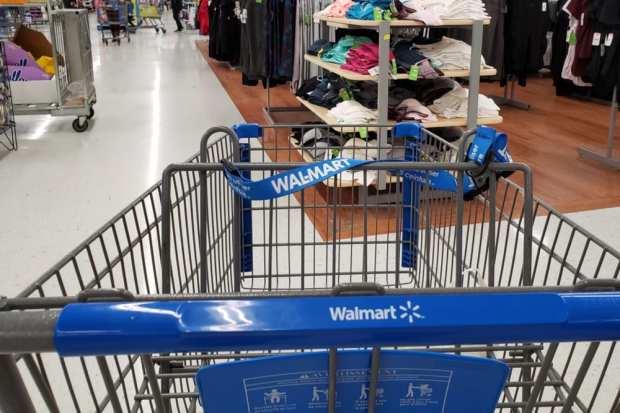Walmart Earnings Fuel Concerns Over Retail’s Stimulus-Fueled Recovery

In commerce as in life, progress is often either permanent or ephemeral. In which camp the fledgling U.S. retail recovery rests remains to be seen.
As PYMNTS reported, retail sales in June and in July were up as measured year on year. But the data as reported by the U.S. Census Bureau might show that two months of growth don’t necessarily mark a permanent trend.
After all, the recent gains are likely due in part to the impact of U.S. government stimulus checks that made their way into consumers’ purses and wallets in recent months. That stirred up some spending, but those gains might already be waning.
Consider the fact that retail sales growth is already decelerating. Retail sales were up more than 17 percent on a month-over-month basis in May, but only 8.4 percent month over month in June. And they grew just 1.2 percent month over month in July.
Might spending have slowed in anticipation that U.S. government aid such as the $600 in increased weekly unemployment payments (which ran out at the end of July) would be slow coming this way again? There’s still grappling going on in Congress as to what the next raft of stimulus spending might look like, and where there’s uncertainty over cash flow, it follows that caution comes in tandem. Unemployment, of course, also remains stubbornly high at more than 10 percent.
And yet, buoyed by the trillions of dollars in stimulus spending that the government began sending out in April, spending was strong enough to boost many companies’ second-quarter results.
Walmart’s latest earnings report sheds some light on this. The company said that U.S. comparative store sales excluding fuel increased 9.3 percent. It also saw a 97 percent growth rate seen in eCommerce, while grocery spending gained 27 percent year over year.
CEO Doug McMillon said that comp sales were buoyed by tailwinds that included government stimulus and a shift by consumers toward eating at home. Other positives included consumers embracing more entertainment at home, in addition to investing more in their homes and yards.
That last spending surge also benefitted The Home Depot, which saw 25 percent growth in comp sales. During The Home Depot’s conference call, CEO Craig Menear said “in terms of the overall benefit from stimulus, it’s hard to quantify. But we have to believe that there are some. When customers have more money in their pocket, there is some benefit to that.”
Advance Auto Parts, which logged a 7.5 percent increase in comp store sales, likewise said that stimulus spending helped lead consumers to put more time and money on their vehicles. In the words of CEO Tom Greco, “without question we benefitted” from stimulus and enhanced unemployment benefits.
But as for the ephemeral nature of it all, Walmart management noted that as stimulus funds tapered off toward the quarter’s end, sales started to normalize, especially in grocery. That indicates that the gains might be short lived.
A tell, of sorts, might be found in the latest round of data measuring consumer sentiment. As noted earlier in the month, the University of Michigan’s consumer sentiment survey came in at 72.8 — which, as MarketWatch noted, is only a slight rebound off of its recent lows. And looking out ahead at the next six months, the index’s reading was only 66.5, which indicates that consumers anticipate rough times ahead.
Separately, the latest Federal Reserve Bank of New York‘s Survey of Consumer Expectations found that consumers were hardly upbeat.
“One-year-ahead expectations about households’ financial situations deteriorated, with more respondents expecting their financial situation to worsen and fewer expecting it to improve,” the New York Fed noted. “Both perceptions and expectations of financial conditions remain weak compared to pre-COVID-19 readings.”
